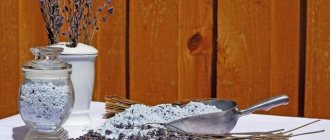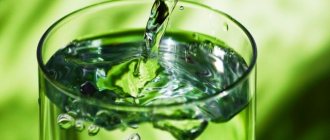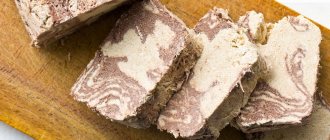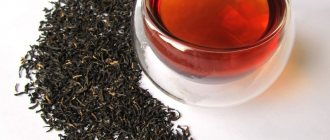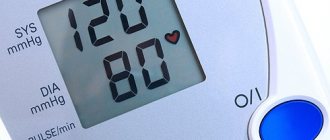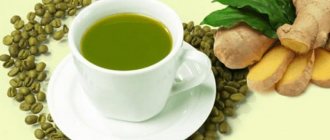Use of magnesia in medicine
Magnesia (magnesium sulfate, magnesium sulfate, Epsom salt, or bitter salt) consists of magnesium cations and sulfate anions. From a chemical point of view, it belongs to the class of salts. This is one of the main salt components of sea water. In medicine, the positive effects of magnesia have been known for a long time. It is used in three versions:
- orally – most often as a laxative, and also with a lack of magnesium in the body;
- parenterally - most often for emergency lowering of blood pressure, as well as in case of threat of premature birth, as a sedative, anticonvulsant, etc.;
- externally - in the form of baths, compresses, as part of ointments, aerosols - for arthritis, as a wound healing agent, as nasal drops and aerosols.
Magnesium sulfate is produced in powder form in sachets for oral administration and in the form of a solution in ampoules for parenteral administration. To prepare baths, you usually take bags of magnesia powder. For one bath you will need 100-200 g of salt. Magnesium sulfate is an odorless white powder, bitter in taste, soluble in water.
In stores you can find ready-made bath salts with magnesium, usually called “Epsom salts”, packaged in several kilograms.
Instructions for using magnesium for baths
A bath with magnesium is one of the popular methods of using the drug, which helps to relax, cleanse the skin, lose weight, and relieve muscle tension after working out in the gym. This method helps improve metabolic processes, helping to eliminate extra pounds and toxins.
Magnesium bath + baking soda
To enhance the effect of this beneficial procedure, it is recommended to add baking soda to the bath with magnesium sulfate.
To do this, you need to add Epsom salt to warm water (temperature range – 36-38ºС) and stir thoroughly. The amount of salt varies from half a kilogram to a kilogram. You need to stir so that all the crystals dissolve. Only after this add 2 tbsp. baking soda, wait until it dissolves again. While you wait, you should drink 250 ml of regular drinking water. After which you can take a bath for up to 20 minutes. You are allowed to dive headfirst.
An important condition: the water should reach the heart line, but not exceed it. Otherwise, the load on the heart muscle increases. After a bath with magnesium, be sure to stand for a while under a cool shower, dry yourself with a terry towel, wrap yourself in a warm blanket and sweat.
Magnesium bath + herbal tea
In this case, you need to fill the bath with hot water (38-44ºС), add 2-3 cups of Epsom salt and wait until it is completely dissolved. Bath time is 15-20 minutes. While enjoying the pleasant relaxing effect of the salts, you need to drink 300 ml of herbal tea (a large mug). Make sure that the amount of water in the bath does not cover your entire chest, as this may cause increased heart rate.
When the procedure is completed, all that remains is to dry yourself with a terry towel and put on a warm robe. Treat yourself to a magnesium sulfate bath once or twice a week. The effect will not take long to appear: not only unnecessary kilograms will be lost, but also cellulite in problem areas. The skin will acquire a healthy color, firmness, and elasticity.
So that you can fully experience the effect of Epsom salts, we have prepared a care calendar and a free guide with recipes. Take care of yourself with pleasure, getting guaranteed results.
The benefits of salt baths
The benefits of a magnesium bath on the body are due to local and general effects. Magnesium, like sodium, potassium and other ions, is not absorbed through the skin into the body. It penetrates no further than the epidermis. Therefore, all the effects that magnesia has when taken orally and parenterally are not achieved when taking a bath. That is, you should not expect a choleretic, laxative effect, or hope to increase the level of magnesium in the blood by taking only a bath. But magnesium has a general effect on the body. How does this happen?
The complex effect of a magnesium bath is determined by thermal, mechanical and chemical factors.
Kinds
Based on temperature conditions, foot baths are divided into several subtypes, each of which has a tonic or calming effect:
- Hot;
- Warm;
- Cool;
- Cold;
- Contrasting.
Hot baths
taken at temperatures up to 40°C. Thanks to hot water, the functioning of the circulatory system is stimulated, which in turn leads to improved functioning of the internal organs of the body. To prevent the water from cooling down for a long time, add hot water to the bath and cover your feet with a warm blanket. The procedure itself lasts about half an hour.
Warm and cool baths
They differ from hot ones only in temperature and the use of various additives. Therapy lasts about 20 minutes. Warm baths are taken at temperatures up to 40°C, cool baths at temperatures up to 37°C. Such physical procedures help to cope well with hyperhidrosis, as well as relieve fatigue and improve the patient’s nervous system.
Cold baths
are used for the purpose of healing and general hardening of the body. The procedure lasts only 5 minutes and takes place with a gradual decrease in water temperature over several days: from 35°C to 10°C.
Contrast therapy
works great against varicose veins. The temperature difference between two baths with warm and cold water leads to expansion and, accordingly, contraction of the blood vessels of the legs - it is thanks to these actions that the tone of the circulatory system increases.
Like many other medical procedures, bath physiotherapy also has a number of indications and contraindications.
Local effect of magnesia
Salt baths conduct 1.5 times more heat into the body than ordinary fresh baths. The resulting heat dilates the blood vessels of the skin, increasing blood flow. Mechanical irritation of the nerve endings with salt particles also leads to the filling of skin vessels with blood. Moreover, the higher the concentration of magnesium sulfate in water, the stronger their irritating effect and the stronger the filling of skin vessels with blood. Increased salt water pressure affects skin receptors, reducing the excitability and conductivity of nerve endings, which reduces tactile and pain sensitivity, activates the anticoagulant system and reduces platelet aggregation activity. This promotes the resorption of inflammation and stimulates the growth of granulation tissue.
Movements in salt water are less painful, which makes it possible to use magnesium baths to treat the musculoskeletal system.
How to apply magnesium sulfate on a site
Instructions for using magnesium sulfate for plants include a list of recommendations on timing, dosage and methods of applying the drug.
Flower growers actively use magnesia in poor lighting conditions, since when there is a lack of light, more substances are needed for photosynthesis. Magnesium sulfate does not pollute the soil, and the remains of the undigested substance remain in it until the next moment when the plants need magnesium again. It is recommended to dilute the fertilizer with warm water, which is used for watering indoor plants. Flowers need a higher concentration of magnesium when compared with the needs of berry bushes and vegetables.
Magnesium is especially needed in sandy loam and sandy soils. In soil with a high sand content, fertilizers are only enough for one season, so every year it is necessary to carry out activities again, constantly using mineral fertilizers for root and foliar application. Sand quickly allows water to pass through, and food is washed into the lower horizon, where it is inaccessible to plants. The effect of using magnesium sulfate will become noticeable with regular use during the growing season. In total, 3-4 feedings will be needed per season.
Considering that sandy soils are often acidic, it is necessary to deacidify the soil with wood ash or lime before using magnesium. This way, magnesium salts are better absorbed by plant roots. The sands are saturated with oxygen, but during drought they dry out quickly, disrupting the absorption of the substance. It is advisable to water first, and then use sulfates and other fertilizers to protect the roots from burning.
General effect of magnesia
Mechanical irritation of skin receptors causes the release of histamine, which dilates the capillaries and has a stimulating effect on the body as a whole. Along with histamine, acetylcholine is released, which stimulates the vagus nerve, which benefits the entire body. Irritation of the vagus nerve activates the parasympathetic nervous system, which is responsible for the accumulation of resources, rest, sleep, and calmness. As a result, symptoms of chronic fatigue and stress disappear. The effect of baths on the autonomic nervous system allows them to be used in the treatment of rheumatic diseases.
Bath with magnesium for weight loss - myth or truth?
Is it true. You can lose weight, but the effect will be short-lived. The weight loss effect is achieved due to the loss of water by the body after taking a bath. Any salt solution creates increased osmotic pressure, which “pulls” water towards itself. The laxative effect of magnesia when taken orally is based on this principle. Salt, entering the intestine, creates osmotic pressure in its lumen, attracting water. The stool is liquefied and eliminated easily and quickly. The use of drops and sprays with sea salt is based on the same principle.
The increased osmotic pressure of the magnesium solution draws water from the skin. This process is called dehydration. The skin dries out and becomes thinner, which explains the decrease in volume. Fluid is removed not only from the skin, but also from the entire body, which leads to weight loss. During the first procedure you can lose from 500 g to 2 kg.
You should not count on a lasting effect from the procedures. You cannot repeat them many times - severe dehydration will occur - a life-threatening condition.
Most reviews of baths with magnesium for weight loss note a positive effect - weight loss occurs quickly, hip volume decreases by 1-2 centimeters. After a few days the effect disappears. Therefore, according to reviews, a magnesium bath can be used before important events, when you want to look slimmer. In addition, many women note the cellulite-smoothing effect of taking salt baths.
Reviews about the use of magnesia
You can hear a lot of positive reviews about magnesia. This substance is an excellent aid in the fight against extra pounds. However, it is worth remembering that this salt cannot burn fat on its own. Therefore, magnesium will be effective only in combination with a certain diet. In any case, it is better to consult a professional for advice. The doctor will select products that will promote rapid weight loss, and will also tell you how best to use magnesium in a particular case.
Indications for taking baths
At home, Epsom salt baths are useful for many pathological conditions:
- Diseases of the musculoskeletal system - osteoarthritis, osteochondrosis, intervertebral disc herniation, joint damage, fractures, osteitis and periostitis, diseases of periarticular tissues (bursitis, myalgia, myositis, periarthritis), contractures, trophic ulcers.
- Diseases of the nervous system – radiculitis, polyneuritis, consequences of spinal cord injuries, vegetative-vascular dystonia.
- Gynecological diseases - chronic inflammation of the uterus, appendages, infertility, ovarian failure.
- Urological diseases - chronic prostatitis, folliculitis, cavernitis, vesiculitis.
Harm and contraindications of baths
Magnesium sulfate is a medicinal substance, so it should not be used thoughtlessly. For many pathologies, baths with magnesium are prohibited. Contraindications:
- all diseases in the acute stage - infectious, ENT, venereal, blood diseases, tuberculosis;
- malignant tumors;
- frequent bleeding;
- normal pregnancy from the 26th week, and in the presence of pathology - at all times;
- some cardiovascular diseases - heart defects, hypertension, cerebral vascular sclerosis;
- some diseases of the digestive system - acute ulcers of the stomach, intestines, polyps, attacks of cholelithiasis, cirrhosis of the liver, nervous - severe Parkinson's disease, multiple sclerosis, epilepsy, respiratory system - bronchial asthma with severe attacks, purulent sputum;
- some diseases of bones and joints - polyarthritis with deformities;
- some urological - chronic renal failure stages II and III and gynecological - ovarian cyst, bleeding erosion, cervical polyps;
- severe forms of metabolic diseases;
- skin diseases - all fungal diseases, scabies, psoriasis in the acute stage.

